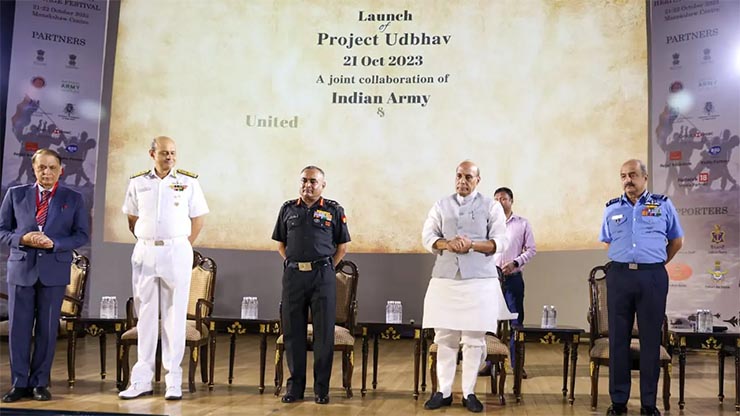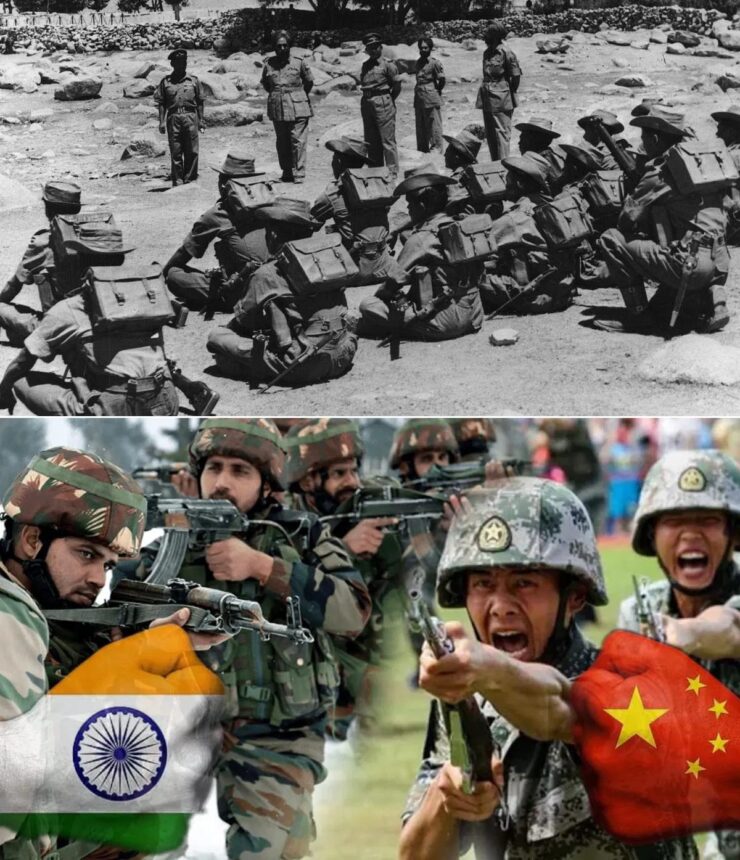
The tools, methods and perceptions of war may have changed, but war itself has not changed. As UK-based strategist and author Colin Gray says, “Some confused theorists would have us believe that war can change its nature. Let us stamp on such nonsense immediately. War is organised violence threatened or waged for political purposes. That is its nature. If the behaviour under scrutiny is other than that just defined, it is not war.”
The immutability of the nature and causes of war means the lessons and strategies of the past are relevant today and tomorrow. It is in this backdrop that the Indian Army has launched Project Udbhav, which seeks to rediscover and tap into the Indic heritage of statecraft and strategic thought derived from ancient Indian texts on statecraft, warcraft, diplomacy and grand strategy.
According to Lt General Tarun Kumar Aich, Deputy Chief of Army Staff (Strategy), the project’s objective is to “synthesise ancient wisdom with contemporary military practices, forging a unique and holistic approach to address modern security challenges.”
The Sanskrit word ‘Udbhav’, which means ‘origin’, embodies the Indian Army’s endeavour to revisit the roots of India’s military thought. The project aims at understanding India’s ancient military systems and indigenous strategic military cultures for the development of an indigenous strategic vocabulary, which is rooted in India’s philosophy and culture. “It acknowledges the nation’s vintage scriptures and writings spanning centuries, and contains profound knowledge that can benefit modern military strategies,” says Aich.
The project launches a new era, signifying its commitment to nurturing a future where India’s military might and strategic thinking are enhanced by the country’s “rich and strategic past”. Through the project, the Army wants to educate junior military leaders and inform senior military commanders and academia to facilitate the creation of a knowledge pool for scholars and defence personnel for further studies, which will create an understanding of the relevance of these findings in a contemporary context.
The objective of Project Udbhav is to synthesise ancient wisdom with contemporary military practices, forging a unique and holistic approach to address modern security challenges: Lt General Tarun Kumar Aich
The indigenous concepts, varied approaches to warfare and leadership, and unique strategies propounded in our ancient texts like those by Kautilya and Kamandaka provide a fertile ground from which to cultivate strategies and doctrines that are not only contextually relevant to the Indian military landscape but also provide a foundation upon which new, innovative strategies can be developed.
Ancient vs Modern
To illustrate the value of ancient Indian military thought, let’s explore an incident from the India-Pakistan War of 1965. But first a couple of caveats. One, everything ancient isn’t necessarily good just as everything modern isn’t always bad. Two, fighting the wars of yesterday can be a tricky exercise because the knowledge we have today about the circumstances of those days may not have been available to the generals in 1965.
During the peak of the 1965 India-Pakistan War, the Chief of the Army Staff, General Jayanto Nath Chaudhuri, provided wrong information to Prime Minister Lal Bahadur Shastri, saying India should stop fighting because the Army was low on ammunition. It is unsure where he got the information from because India still had ammunition to fight for 22 more days. In contrast, Pakistan only had supplies for four more days. With the Indian Army already on the outskirts of Lahore and Sialkot, if the war had continued another week, both cities could have been captured.
In the end, when the ceasefire was declared, the Army was denied an outright victory. This stalemate happened because General Chaudhuri’s mentors were the Sandhurst-educated British generals – who had utterly failed before both the Germans and Japanese during World War II. The British-trained officers in the Indian Army had a defensive mentality and lacked the aggression required to achieve breakthroughs. It’s the element of surprising and daring that wins wars, and very few generals of that generation had that quality.
Now imagine if General Chaudhari had studied the Kautilyan military strategy. In the Arthashastra, the strategist of the Mauryan Empire wrote over 2,300 years ago: “An enemy’s destruction shall be brought about even at the cost of great losses in men, material and wealth.” Kautilya clearly did not mean that a commander should recklessly fling all his resources into a do-or-die war. On the contrary, he was of the opinion that, “If the end could be achieved by non-military methods, even by methods of intrigue, duplicity and fraud, I would not advocate an armed conflict.”
Wisdom of Arthashastra
The Arthashastra has long been revered as a comprehensive guide to statecraft, governance, and military strategy. Dating back more than two millennia, this text offers valuable insights into the art of war and the formulation of military doctrine. It outlines a structured approach to military strategy and doctrine that addresses various facets of warfare including Objectives and Diplomacy, Strategic Planning, Economic Warfare, Asymmetric Warfare, and Ethics and Conduct.
Kautilya says, “An enemy’s destruction shall be brought about even at the cost of great losses in men, material and wealth… (but) if the end could be achieved by non-military methods, even by methods of intrigue, duplicity and fraud, I would not advocate an armed conflict”
The Arthashastra, with its ancient wisdom, continues to provide valuable lessons for contemporary military doctrine. Its comprehensive approach to statecraft and warfare, including diplomacy, strategy, and ethics, offers a timeless framework for military leaders seeking to navigate the complexities of the modern world. While technology and tactics have evolved, the fundamental principles of effective military doctrine remain rooted in the wisdom of texts like the Arthashastra, reminding us that the past can illuminate the path to a more secure and peaceful future.

Essence of Nitisara
Nitisara, a 3rd-6th century CE Sanskrit treatise on statecraft and military strategy, holds a treasured place in the realm of ancient Indian literature. Attributed to the renowned philosopher and strategist Kamandaki, this work provides profound insights into the art of war and the formulation of military doctrine. In this article, we will explore the significance of Nitisara in shaping military doctrine, and how its principles continue to offer valuable lessons for contemporary military thinking.
Nitisara, often translated as “The Essence of Policy,” encapsulates a holistic approach to military strategy and doctrine. It covers a wide array of subjects, reflecting its comprehensive nature including Ethical Warfare, Strategic Thinking, Diplomacy and Alliances, Psychological Warfare, Logistics and Resource Management and Urban Warfare.
Nitisara, with its ancient wisdom, offers a comprehensive approach to statecraft and warfare, including ethics, strategy, diplomacy, and logistics, as well as a timeless framework for military leaders seeking to navigate the complexities of the modern world
Nitisara, with its ancient wisdom, continues to provide invaluable lessons for contemporary military doctrine. Its comprehensive approach to statecraft and warfare, including ethics, strategy, diplomacy, and logistics, offers a timeless framework for military leaders seeking to navigate the complexities of the modern world. While the tools and technologies of war have evolved, the fundamental principles of effective military doctrine remain rooted in the wisdom of texts like Nitisara, reminding us that the past can illuminate the path to a more secure and prosperous future.
Conclusion
Ancient Indian military doctrine provides a valuable foundation for modern India’s approach to military strategy, ethics, and national security. While the nature of warfare and the tools of conflict have evolved, the core principles of ethical conduct, adaptability, strategic planning, and psychological warfare continue to have relevance and utility for the nation in the contemporary world. By integrating these principles with modern military thinking, India can build a stronger and more ethically grounded defense strategy.
– The writer is a globally cited defence analyst. His work has been published by leading think tanks, and quoted extensively in books on diplomacy, counter terrorism, warfare and economic development. The views expressed are of the writer and do not necessarily reflect the views of Raksha Anirveda








